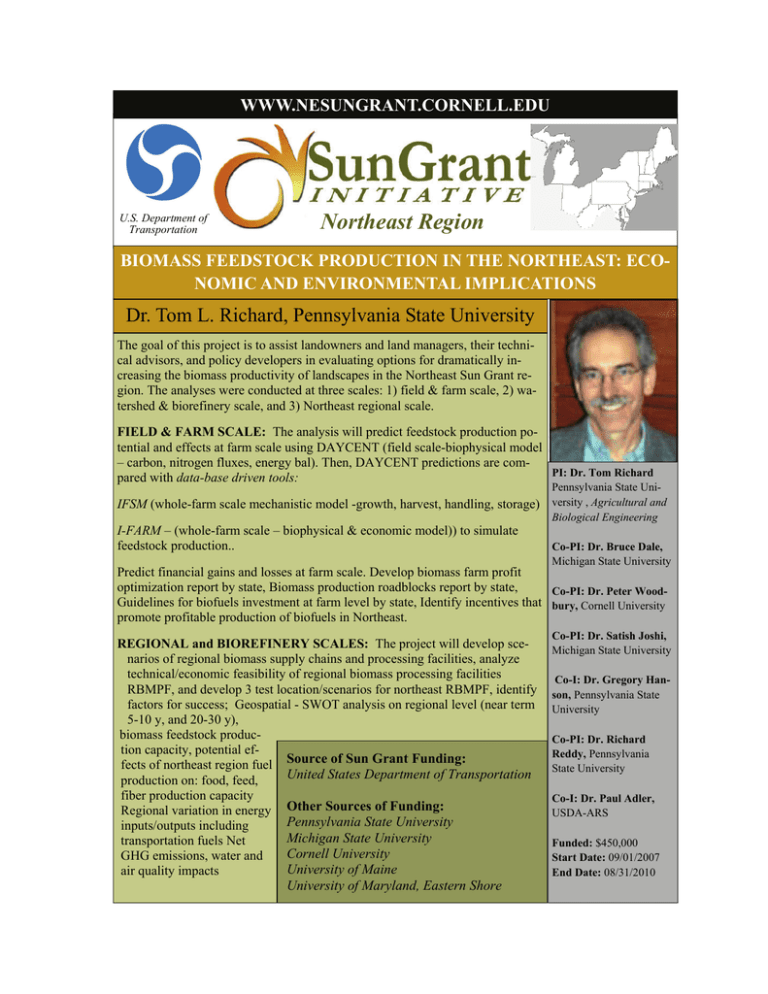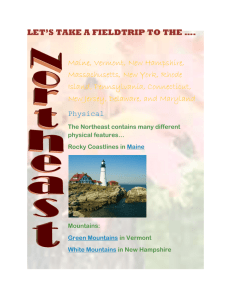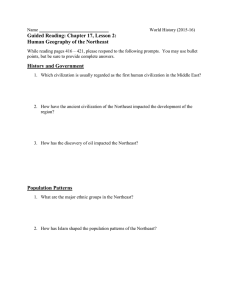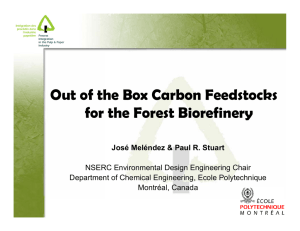Northeast Region
advertisement

WWW.NESUNGRANT.CORNELL.EDU U.S. Department of Transportation Northeast Region BIOMASS FEEDSTOCK PRODUCTION IN THE NORTHEAST: ECONOMIC AND ENVIRONMENTAL IMPLICATIONS Dr. Tom L. Richard, Pennsylvania State University The goal of this project is to assist landowners and land managers, their technical advisors, and policy developers in evaluating options for dramatically increasing the biomass productivity of landscapes in the Northeast Sun Grant region. The analyses were conducted at three scales: 1) field & farm scale, 2) watershed & biorefinery scale, and 3) Northeast regional scale. FIELD & FARM SCALE: The analysis will predict feedstock production potential and effects at farm scale using DAYCENT (field scale-biophysical model – carbon, nitrogen fluxes, energy bal). Then, DAYCENT predictions are comPI: Dr. Tom Richard pared with data-base driven tools: IFSM (whole-farm scale mechanistic model -growth, harvest, handling, storage) I-FARM – (whole-farm scale – biophysical & economic model)) to simulate feedstock production.. Pennsylvania State University , Agricultural and Biological Engineering Co-PI: Dr. Bruce Dale, Michigan State University Predict financial gains and losses at farm scale. Develop biomass farm profit optimization report by state, Biomass production roadblocks report by state, Co-PI: Dr. Peter WoodGuidelines for biofuels investment at farm level by state, Identify incentives that bury, Cornell University promote profitable production of biofuels in Northeast. REGIONAL and BIOREFINERY SCALES: The project will develop scenarios of regional biomass supply chains and processing facilities, analyze technical/economic feasibility of regional biomass processing facilities RBMPF, and develop 3 test location/scenarios for northeast RBMPF, identify factors for success; Geospatial - SWOT analysis on regional level (near term 5-10 y, and 20-30 y), biomass feedstock production capacity, potential effects of northeast region fuel Source of Sun Grant Funding: United States Department of Transportation production on: food, feed, fiber production capacity Regional variation in energy Other Sources of Funding: Pennsylvania State University inputs/outputs including Michigan State University transportation fuels Net Cornell University GHG emissions, water and University of Maine air quality impacts University of Maryland, Eastern Shore Co-PI: Dr. Satish Joshi, Michigan State University Co-I: Dr. Gregory Hanson, Pennsylvania State University Co-PI: Dr. Richard Reddy, Pennsylvania State University Co-I: Dr. Paul Adler, USDA-ARS Funded: $450,000 Start Date: 09/01/2007 End Date: 08/31/2010





